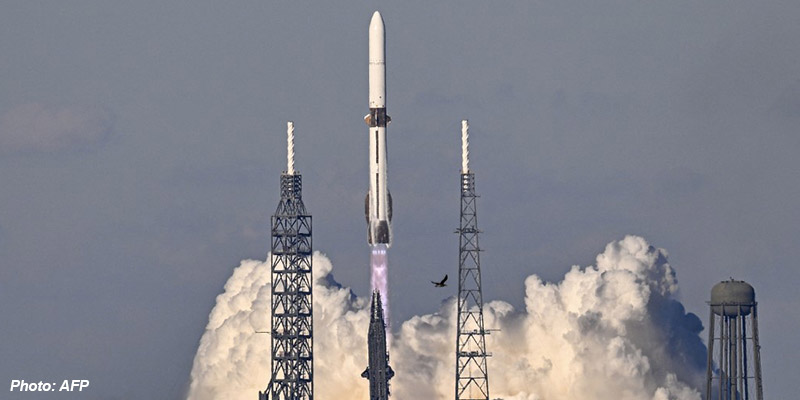- World
- Nov 14
NASA’s ESCAPADE begins journey to Mars
• NASA’s ESCAPADE (Escape and Plasma Acceleration and Dynamics Explorers) spacecraft was launched aboard a Blue Origin New Glenn rocket from Launch Complex 36 at Cape Canaveral Space Force Station in Florida on November 13.
• The satellite pair will take simultaneous observations from different locations around Mars.
• The data returned from the ESCAPADE spacecraft will provide new insight into the evolution of Mars’ climate, contributing to the body of research investigating how Mars began losing its atmosphere and water system.
Blazing new trails
• Rather than heading directly to Mars, the twin spacecraft will first head to a location in space a million miles from Earth called Lagrange point 2.
• Right now, Earth and Mars are on opposite sides of the Sun, which makes it harder to travel from one planet to the other.
• In November 2026, when Earth and Mars are closely aligned in their orbits, the ESCAPADE spacecraft will loop back to Earth and use Earth’s gravity to slingshot themselves toward Mars.
• In the past, Mars missions have waited to launch during a brief window of time when Earth and Mars are aligned, which happens roughly every two years.
• However, with the type of trajectory ESCAPADE is using, future missions could launch nearly anytime and wait in space, queueing up for their interplanetary departure, until the two planets are in position.
• ESCAPADE is expected to reach Mars in September 2027, becoming the first coordinated dual-spacecraft mission to enter orbit around another planet.
• When ESCAPADE reaches Mars, it will study present-day effects of the solar wind and solar storms on the Red Planet in real time.
• Its two identical satellites — Blue and Gold — will provide an unprecedented stereo view of Mars’ magnetosphere.
• Over several months, the two spacecraft will arrange themselves in their initial science formation, in which the twin spacecraft will follow each other in the same “string-of-pearls” orbit, passing through the same areas in quick succession to investigate for the first time how space weather conditions vary on short timescales.
• It will investigate how a never-ending, million-mile-per-hour stream of particles from the Sun, known as the solar wind, has gradually stripped away much of the Martian atmosphere, causing the planet to cool and its surface water to evaporate.
• This will provide insights about Martian space weather and help NASA better understand the conditions astronauts will face when they reach Mars.
• Later, both spacecraft will shift into different orbits, with one travelling farther from Mars and the other staying closer to it.
• Planned to last for five months, this second formation aims to study the solar wind and Mars’ upper atmosphere simultaneously, allowing scientists to investigate how the planet responds to the solar wind in real time.
• In addition, ESCAPADE will provide more information about Mars’ ionosphere — a part of the upper atmosphere that future astronauts will rely on to send radio and navigation signals around the planet.
• The mission is led by the University of California, Berkeley.

